Weightlessness
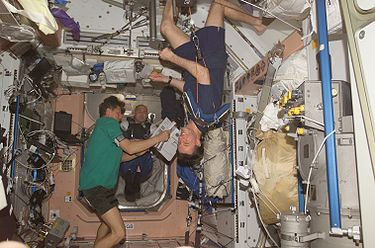
Weightlessness is the complete or near-complete absence of the sensation of weight, i.e., zero apparent weight. It is also termed zero g-force, or zero-g (named after the g-force)[1] or, incorrectly, zero gravity.
Microgravity environment is more or less synonymous in its effects, with the recognition that g-forces are never exactly zero.
Weight is a measurement of the force on an object at rest in a relatively strong gravitational field (such as on the surface of the Earth). These weight-sensations originate from contact with supporting floors, seats, beds, scales, and the like. A sensation of weight is also produced, even when the gravitational field is zero, when contact forces act upon and overcome a body's inertia by mechanical, non-gravitational forces- such as in a centrifuge, a rotating space station, or within an accelerating vehicle.
When the gravitational field is non-uniform, a body in free fall experiences tidal forces and is not stress-free. Near a black hole, such tidal effects can be very strong, meeting to spaghettification. In the case of the Earth, the effects are minor, especially on objects of relatively small dimensions (such as the human body or a spacecraft) and the overall sensation of weightlessness in these cases is preserved. This condition is known as microgravity, and it prevails in orbiting spacecraft.
Weightlessness in Newtonian mechanics
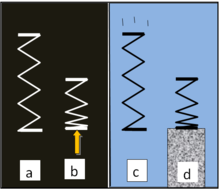
In Newtonian physics, the sensation of weightlessness experienced by astronauts is not the result of there being zero gravitational acceleration (as seen from the Earth), but of there being no g-force that an astronaut can feel because of the free-fall condition, and also there being zero difference between the acceleration of the spacecraft and the acceleration of the astronaut. Space journalist James Oberg explains the phenomenon this way:[2]
The myth that satellites remain in orbit because they have "escaped Earth's gravity" is perpetuated further (and falsely) by almost universal misuse of the word "zero gravity" to describe the free-falling conditions aboard orbiting space vehicles. Of course, this isn't true; gravity still exists in space. It keeps satellites from flying straight off into interstellar emptiness. What's missing is "weight", the resistance of gravitational attraction by an anchored structure or a counterforce. Satellites stay in space because of their tremendous horizontal speed, which allows them—while being unavoidably pulled toward Earth by gravity—to fall "over the horizon." The ground's curved withdrawal along the Earth's round surface offsets the satellites' fall toward the ground. Speed, not position or lack of gravity, keeps satellites in orbit around the Earth.
From the perspective of an observer not moving with the object (i.e. in an
Weightless and reduced weight environments
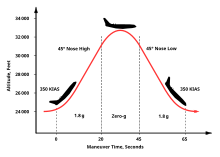
Reduced weight in aircraft
Airplanes have been used since 1959 to provide a nearly weightless environment in which to train astronauts, conduct research, and film motion pictures. Such aircraft are commonly referred by the nickname "Vomit Comet".
To create a weightless environment, the airplane flies in a 10 km (6 mi) parabolic arc, first climbing, then entering a powered dive. During the arc, the propulsion and steering of the aircraft are controlled to cancel the drag (air resistance) on the plane out, leaving the plane to behave as if it were free-falling in a vacuum.

NASA's Reduced Gravity Aircraft
Versions of such airplanes have been operated by
NASA's Microgravity University - Reduced Gravity Flight Opportunities Plan, also known as the Reduced Gravity Student Flight Opportunities Program, allows teams of undergraduates to submit a microgravity experiment proposal. If selected, the teams design and implement their experiment, and students are invited to fly on NASA's Vomit Comet.[citation needed]
European Space Agency A310 Zero-G
The
As of May 2010[update], the ESA has flown 52 scientific campaigns and also 9 student parabolic flight campaigns.[8] Their first Zero-G flights were in 1984 using a NASA KC-135 aircraft in Houston, Texas. Other aircraft used include the Russian Ilyushin Il-76 MDK before founding Novespace, then a French Caravelle and an Airbus A300 Zero-G.[9][10][11]
Commercial flights for public passengers
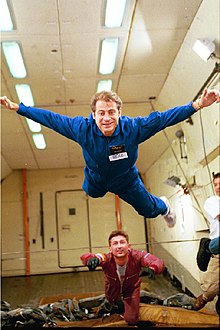
Novespace created Air Zero G in 2012 to share the experience of weightlessness with 40 public passengers per flight, using the same A310 ZERO-G as for scientific experiences.
The Zero Gravity Corporation operates a modified Boeing 727 which flies parabolic arcs to create 25–30 seconds of weightlessness.
Ground-based drop facilities
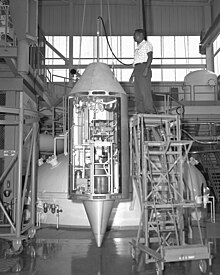
Ground-based facilities that produce weightless conditions for research purposes are typically referred to as drop tubes or drop towers.
NASA's
Also at NASA Glenn is the 2.2 Second Drop Tower, which has a drop distance of 24.1 m. Experiments are dropped in a drag shield in order to reduce the effects of air drag. The entire package is stopped in a 3.3 m tall air bag, at a peak deceleration rate of approximately 20 g. While the Zero Gravity Facility conducts one or two drops per day, the 2.2 Second Drop Tower can conduct up to twelve drops per day.
NASA's Marshall Space Flight Center hosts another drop tube facility that is 105 m tall and provides a 4.6 s free fall under near-vacuum conditions.[14]
Other drop facilities worldwide include:
- Micro-Gravity Laboratory of Japan (MGLAB) – 4.5 s free fall
- Experimental drop tube of the metallurgy department of Grenoble – 3.1 s free fall
- Bremen– 4.74 s free fall
- Queensland University of Technology Drop Tower – 2.0 s free fall
- National Centre for Combustion Research and Development at IIT-M – 2.5 s free fall [15]
Random Positioning Machines
Another ground-based approach to simulate weightlessness for biological sample is a "3D-clinostat," also called a random positioning machine. Unlike a regular clinostat, the tandom positioning machine rotates in two axes simultaneously and progressively establishes a microgravity-like condition via the prinicple of gravity-vector-averaging.
Neutral buoyancy
This section is empty. You can help by adding to it. (November 2022) |
Orbits
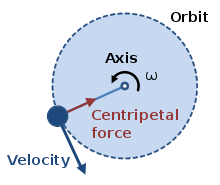
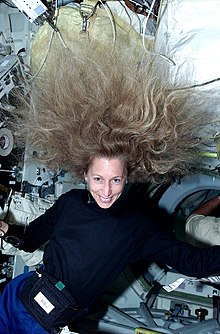

On the
Sub-Orbital flights
Over the years, biomedical research on the implications of space flight has become more prominent in evaluating possible pathophysiological changes in humans.
Orbital Motion
- Effects depending on relative position in the spacecraft:
- Because the force of gravity decreases with distance, objects with non-zero size will be subjected to a tidal force, or a differential pull, between the ends of the object nearest and furthest from the Earth. (An extreme version of this effect is spaghettification.) In a spacecraft in low Earth orbit (LEO), the centrifugal force is also greater on the side of the spacecraft furthest from the Earth. At a 400 km LEO altitude, the overall differential in g-force is approximately 0.384 μg/m.[20][3]
- Gravity between the spacecraft and an object within it may make the object slowly "fall" toward a more massive part of it. The acceleration is 0.007 μg for 1000 kg at 1 m distance.
- Uniform effects (which could be compensated):
- Though extremely thin, there is some air at orbital altitudes of 185 to 1,000 km. This atmosphere causes minuscule deceleration due to friction. This could be compensated by a small continuous thrust, but in practice the deceleration is only compensated from time to time, so the tiny g-force of this effect is not eliminated.
- The effects of the solar wind and radiation pressure are similar, but directed away from the Sun. Unlike the effect of the atmosphere, it does not reduce with altitude.
- Other Effects:
- Routine crew activity: Due to the conservation of momentum, any crew member aboard a spacecraft pushing off a wall causes the spacecraft to move in the opposite direction.
- Structural Vibration: Stress enacted on the hull of the spacecraft results in the spacecraft bending, causing apparent acceleration.
Weightlessness at the center of a planet
This section is empty. You can help by adding to it. (November 2022) |
Absence of gravity
A "stationary" micro-g environment[21] would require travelling far enough into deep space so as to reduce the effect of gravity by attenuation to almost zero. This is simple in conception but requires travelling a very large distance, rendering it highly impractical. For example, to reduce the gravity of the Earth by a factor of one million, one needs to be at a distance of 6 million kilometres from the Earth, but to reduce the gravity of the Sun to this amount, one has to be at a distance of 3.7 billion kilometres. This is not impossible, but it has only been achieved thus far by four interstellar probes: (Voyager 1 and 2 of the Voyager program, and Pioneer 10 and 11 of the Pioneer program.) At the speed of light it would take roughly three and a half hours to reach this micro-gravity environment (a region of space where the acceleration due to gravity is one-millionth of that experienced on the Earth's surface). To reduce the gravity to one-thousandth of that on Earth's surface, however, one needs only to be at a distance of 200,000 km.
| Location | Gravity due to | Total | ||
|---|---|---|---|---|
| Earth | Sun | rest of Milky Way | ||
| Earth's surface | 9.81 m/s2 | 6 mm/s2 | 200 pm/s2 = 6 mm/s/yr | 9.81 m/s2 |
| Low Earth orbit | 9 m/s2 | 6 mm/s2 | 200 pm/s2 | 9 m/s2 |
| 200,000 km from Earth | 10 mm/s2 | 6 mm/s2 | 200 pm/s2 | up to 12 mm/s2 |
| 6×106 km from Earth | 10 μm/s2 | 6 mm/s2 | 200 pm/s2 | 6 mm/s2 |
| 3.7×109 km from Earth | 29 pm/s2 | 10 μm/s2 | 200 pm/s2 | 10 μm/s2 |
| Voyager 1 (17×109 km from Earth) | 1 pm/s2 | 500 nm/s2 | 200 pm/s2 | 500 nm/s2 |
| 0.1 light-year from Earth | 400 am/s2 | 200 pm/s2 | 200 pm/s2 | up to 400 pm/s2 |
At a distance relatively close to Earth (less than 3000 km), gravity is only slightly reduced. As an object orbits a body such as the Earth, gravity is still attracting objects towards the Earth and the object is accelerated downward at almost 1g. Because the objects are typically moving laterally with respect to the surface at such immense speeds, the object will not lose altitude because of the curvature of the Earth. When viewed from an orbiting observer, other close objects in space appear to be floating because everything is being pulled towards Earth at the same speed, but also moving forward as the Earth's surface "falls" away below. All these objects are in free fall, not zero gravity.
Compare the gravitational potential at some of these locations.
Health effects

Following the advent of space stations that can be inhabited for long periods, exposure to weightlessness has been demonstrated to have some deleterious effects on human health.[22][23] Humans are well-adapted to the physical conditions at the surface of the Earth. In response to an extended period of weightlessness, various physiological systems begin to change and atrophy. Though these changes are usually temporary, long term health issues can result.
The most common problem experienced by humans in the initial hours of weightlessness is known as
The most significant adverse effects of long-term weightlessness are
In addition, after long
On December 31, 2012, a
Space motion sickness

Space motion sickness (SMS) is thought to be a subtype of motion sickness that plagues nearly half of all astronauts who venture into space.[42] SMS, along with facial stuffiness from headward shifts of fluids, headaches, and back pain, is part of a broader complex of symptoms that comprise space adaptation syndrome (SAS).[43] SMS was first described in 1961 during the second orbit of the fourth crewed spaceflight when the cosmonaut Gherman Titov aboard the Vostok 2, described feeling disoriented with physical complaints mostly consistent with motion sickness. It is one of the most studied physiological problems of spaceflight but continues to pose a significant difficulty for many astronauts. In some instances, it can be so debilitating that astronauts must sit out from their scheduled occupational duties in space – including missing out on a spacewalk they have spent months training to perform.[44] In most cases, however, astronauts will work through the symptoms even with degradation in their performance.[45]
Despite their experiences in some of the most rigorous and demanding physical maneuvers on earth, even the most seasoned astronauts may be affected by SMS, resulting in symptoms of severe
Even when the nausea and vomiting resolve, some central nervous system symptoms may persist which may degrade the astronaut's performance.[47] Graybiel and Knepton proposed the term "sopite syndrome" to describe symptoms of lethargy and drowsiness associated with motion sickness in 1976.[48] Since then, their definition has been revised to include "...a symptom complex that develops as a result of exposure to real or apparent motion and is characterized by excessive drowsiness, lassitude, lethargy, mild depression, and reduced ability to focus on an assigned task."[49] Together, these symptoms may pose a substantial threat (albeit temporary) to the astronaut who must remain attentive to life and death issues at all times.
SMS is most commonly thought to be a disorder of the vestibular system that occurs when sensory information from the visual system (sight) and the proprioceptive system (posture, position of the body) conflicts with misperceived information from the semicircular canals and the otoliths within the inner ear. This is known as the 'neural mismatch theory' and was first suggested in 1975 by Reason and Brand.[50] Alternatively, the fluid shift hypothesis suggests that weightlessness reduces the hydrostatic pressure on the lower body causing fluids to shift toward the head from the rest of the body. These fluid shifts are thought to increase cerebrospinal fluid pressure (causing back aches), intracranial pressure (causing headaches), and inner ear fluid pressure (causing vestibular dysfunction).[51]
Despite a multitude of studies searching for a solution to the problem of SMS, it remains an ongoing problem for space travel. Most non-pharmacological countermeasures such as training and other physical maneuvers have offered minimal benefit. Thornton and Bonato noted, "Pre- and inflight adaptive efforts, some of them mandatory and most of them onerous, have been, for the most part, operational failures."[52] To date, the most common intervention is promethazine, an injectable antihistamine with antiemetic properties, but sedation can be a problematic side effect.[53] Other common pharmacological options include metoclopramide, as well as oral and transdermal application of scopolamine, but drowsiness and sedation are common side effects for these medications as well.[51]
Musculoskeletal effects
In the space (or microgravity) environment the effects of unloading varies significantly among individuals, with sex differences compounding the variability.
In the first two weeks that the muscles are unloaded from carrying the weight of the human frame during space flight, whole muscle atrophy begins. Postural muscles contain more slow fibers, and are more prone to atrophy than non-postural muscle groups.[55] The loss of muscle mass occurs because of imbalances in protein synthesis and breakdown. The loss of muscle mass is also accompanied by a loss of muscle strength, which was observed after only 2–5 days of spaceflight during the Soyuz-3 and Soyuz-8 missions.[55] Decreases in the generation of contractile forces and whole muscle power have also been found in response to microgravity.
To counter the effects of microgravity on the musculoskeletal system, aerobic exercise is recommended. This often takes the form of in-flight cycling.[55] A more effective regimen includes resistive exercises or the use of a penguin suit[55] (contains sewn-in elastic bands to maintain a stretch load on antigravity muscles), centrifugation, and vibration.[56] Centrifugation recreates Earth's gravitational force on the space station, in order to prevent muscle atrophy. Centrifugation can be performed with centrifuges or by cycling along the inner wall of the space station.[55] Whole body vibration has been found to reduce bone resorption through mechanisms that are unclear. Vibration can be delivered using exercise devices that use vertical displacements juxtaposed to a fulcrum, or by using a plate that oscillates on a vertical axis.[57] The use of beta-2 adrenergic agonists to increase muscle mass, and the use of essential amino acids in conjunction with resistive exercises have been proposed as pharmacologic means of combating muscle atrophy in space.[55]
Cardiovascular effects
Next to the skeletal and muscular system, the cardiovascular system is less strained in weightlessness than on Earth and is de-conditioned during longer periods spent in space.
Many studies on the physiological effects of weightlessness on the cardiovascular system are done in parabolic flights. It is one of the only feasible options to combine with human experiments, making parabolic flights the only way to investigate the true effects of the micro-g environment on a body without traveling into space.
Effects on non-human organisms
Russian scientists have observed differences between cockroaches conceived in space and their terrestrial counterparts. The space-conceived cockroaches grew more quickly, and also grew up to be faster and tougher.[70]
Chicken eggs that are put in microgravity two days after fertilization appear not to develop properly, whereas eggs put in microgravity more than a week after fertilization develop normally.[71]
A 2006 Space Shuttle experiment found that
Under certain test conditions, microbes have been observed to thrive in the near-weightlessness of space[74] and to survive in the vacuum of outer space.[75][76]
Commercial applications
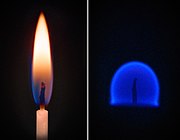
High-quality crystals
While not yet a commercial application, there has been interest in growing crystals in micro-g, as in a space station or automated artificial satellite, in an attempt to reduce crystal lattice defects.[77] Such defect-free crystals may prove useful for certain microelectronic applications and also to produce crystals for subsequent X-ray crystallography.
In 2017, an experiment on the ISS was conducted to crystallize the monoclonal antibody therapeutic Pembrolizumab , where results showed more uniform and homogenous crystal particles compared to ground controls.[78] Such uniform crystal particles can allow for the formulation of more concentrated, low-volume antibody therapies, something which can make them suitable for subcutaneous administration, a less invasive approach compared to the current prevalent method of intravenous administration.[79]
-
Comparison of boiling of water under Earth's gravity (1 g, left) and microgravity (right). The source of heat is in the lower part of the photograph.
-
A comparison between the combustion of a candle onISS(right).
-
Comparison of insulin crystals growth in outer space (left) and on Earth (right).
-
Liquids may also behave differently than on Earth, as demonstrated in this video
See also
- Artificial gravity
- Astronauts
- Clinostat
- Commercial use of space
- Effect of spaceflight on the human body
- ESA Scientific Research on the International Space Station
- European Low Gravity Research Association (ELGRA)
- G-jitter
- Microgravity University
- Reduced-gravity aircraft
- Scientific research on the International Space Station
- Space adaptation syndrome
- Space manufacturing
- Space medicine
- Vomit Comet
References
- ^ "Weightlessness and Its Effect on Astronauts". Space.com. 16 December 2017.
The sensation of weightlessness, or zero gravity, happens when the effects of gravity are not felt.
- ^ Oberg, James (May 1993). "Space myths and misconceptions". Omni. 15 (7). Archived from the original on 2007-09-27. Retrieved 2007-05-02.
- ^ .
- ^ Reduced Gravity Research Program
- ^ "Loading..." www.nasaexplores.com. Retrieved 24 April 2018.
- ^ "Zero-G flying means high stress for an old A310". Flightglobal.com. 2015-03-23. Archived from the original on 2017-08-21. Retrieved 2017-08-23.
- ^ "Novespace: microgravity, airborne missions". www.novespace.com. Archived from the original on 31 March 2018. Retrieved 24 April 2018.
- ^ European Space Agency. "Parabolic Flight Campaigns". ESA Human Spaceflight web site. Archived from the original on 2012-05-26. Retrieved 2011-10-28.
- ^ European Space Agency. "A300 Zero-G". ESA Human Spaceflight web site. Retrieved 2006-11-12.
- ^ European Space Agency. "Next campaign". ESA Human Spaceflight web site. Retrieved 2006-11-12.
- ^ European Space Agency. "Campaign Organisation". ESA Human Spaceflight web site. Retrieved 2006-11-12.
- ^ "French astronaut performs "Moonwalk" on parabolic flight - Air & Cosmos - International". Air & Cosmos - International. Archived from the original on 2017-08-21. Retrieved 2017-08-23.
- ^ "Tom Cruise defies gravity in Novespace ZERO-G A310". Archived from the original on 2017-08-21. Retrieved 2017-08-23.
- ^ "Marshall Space Flight Center Drop Tube Facility". nasa.gov. Archived from the original on 19 September 2000. Retrieved 24 April 2018.
- .
- .
- ^ Karthikeyan KC (September 27, 2015). "What Are Zero Gravity and Microgravity, and What Are the Sources of Microgravity?". Geekswipe. Retrieved 17 April 2019.
- ^ Oberg, James (May 1993). "Space myths and misconceptions – space flight". OMNI. 15 (7): 38ff.
- PMID 33242416.
- ISBN 9783896755001.
- ^ Depending on distance, "stationary" is meant relative to Earth or the Sun.
- New York Times. Archivedfrom the original on 28 January 2014. Retrieved 27 January 2014.
- S2CID 76667295.
- ^ ISBN 978-1-4020-6769-3.
- ^ "NASA - Johnson Space Center History" (PDF). Archived (PDF) from the original on 2012-04-06. Retrieved 2012-05-10., pg 35, Johnson Space Center Oral History Project, interview with Dr. Robert Stevenson:
"Jake Garn was sick, was pretty sick. I don't know whether we should tell stories like that. But anyway, Jake Garn, he has made a mark in the Astronaut Corps because he represents the maximum level of space sickness that anyone can ever attain, and so the mark of being totally sick and totally incompetent is one Garn. Most guys will get maybe to a tenth Garn, if that high. And within the Astronaut Corps, he forever will be remembered by that."
- ISBN 9781524731595.
One of the nice things about living in space is that exercise is part of your job ... If I don't exercise six days a week for at least a couple of hours a day, my bones will lose significant mass - 1 percent each month ... Our bodies are smart about getting rid of what's not needed, and my body has started to notice that my bones are not needed in zero gravity. Not having to support our weight, we lose muscle as well.
- ^ a b "Health Fitness Archived 2012-05-19 at the Wayback Machine", Space Future
- ^ "The Pleasure of Spaceflight Archived 2012-02-21 at the Wayback Machine", Toyohiro Akiyama, Journal of Space Technology and Science, Vol.9 No.1 spring 1993, pp.21-23
- ^ "The Crazy Effects That Space Travel Has on the Human Body". buzzle.com. Retrieved 24 April 2018.
- ^ S2CID 13965518.
- ^ a b Puiu, Tibi (November 9, 2011). "Astronauts' vision severely affected during long space missions". zmescience.com. Archived from the original on November 10, 2011. Retrieved February 9, 2012.
- ^ a b "Video News - CNN". CNN. Archived from the original on 4 February 2009. Retrieved 24 April 2018.
- ^ a b Space Staff (13 March 2012). "Spaceflight Bad for Astronauts' Vision, Study Suggests". Space.com. Archived from the original on 13 March 2012. Retrieved 14 March 2012.
- PMID 22416248. Retrieved 14 March 2012.
- ^ Fong, MD, Kevin (12 February 2014). "The Strange, Deadly Effects Mars Would Have on Your Body". Wired. Archived from the original on 14 February 2014. Retrieved 12 February 2014.
- PMID 27829076.
- PMID 23300905.
- ^ Staff (January 1, 2013). "Study Shows that Space Travel is Harmful to the Brain and Could Accelerate Onset of Alzheimer's". SpaceRef. Retrieved January 7, 2013.
- ^ Cowing, Keith (January 3, 2013). "Important Research Results NASA Is Not Talking About (Update)". NASA Watch. Retrieved January 7, 2013.
- AP News. Archivedfrom the original on October 30, 2015. Retrieved October 30, 2015.
- ^ Staff (October 29, 2015). "NASA's Efforts to Manage Health and Human Performance Risks for Space Exploration (IG-16-003)" (PDF). NASA. Archived (PDF) from the original on October 30, 2015. Retrieved October 29, 2015.
- PMID 24919385.
- ^ "Space Motion Sickness (Space Adaptation)" (PDF). NASA. June 15, 2016. Retrieved November 25, 2017.
- ^ "Illness keeps astronaut from spacewalk". ABCNews. February 12, 2008. Retrieved November 25, 2017.
- ^ ISBN 978-3-319-32828-7.
- PMID 33828760.
- ^ ISBN 978-1-4614-3396-5.
- PMID 949309.
- S2CID 36203751.
- )
- ^ S2CID 6520556.
- ISBN 978-3-319-32828-7.
- ISBN 978-1-4614-3395-8.
- PMID 25401942.
- ^ S2CID 25185533.
- ^ PMID 26456109.
- PMID 22947546.
- ISBN 978-0-471-26386-9.
- ^ a b White, Ronald J.; Lujan, Barbara F. (1989). Current status and future direction of NASA's Space Life Sciences Program (Report).
- Bibcode:2004ESABu.119...30A.
- PMID 11773310.
- PMID 23569093.
- S2CID 88375293.
- PMID 25312108.
- PMID 15580191.
- ]
- ^ Bungo, Michael (March 23, 2016). "Cardiac Atrophy and Diastolic Dysfunction During and After Long Duration Spaceflight: Functional Consequences for Orthostatic Intolerance, Exercise Capability and Risk for Cardiac Arrhythmias (Integrated Cardiovascular)". NASA. Retrieved November 25, 2017.
- PMID 9631987.
- OCLC 768427940.[page needed]
- ^ "Mutant super-cockroaches from space". New Scientist. January 21, 2008. Archived from the original on June 4, 2016.
- ^ "Egg Experiment in Space Prompts Questions". New York Times. 1989-03-31. Archived from the original on 2009-01-21.
- ^ Caspermeyer, Joe (23 September 2007). "Space flight shown to alter ability of bacteria to cause disease". Arizona State University. Archived from the original on 14 September 2017. Retrieved 14 September 2017.
- PMID 23658630.
- ^ Dvorsky, George (13 September 2017). "Alarming Study Indicates Why Certain Bacteria Are More Resistant to Drugs in Space". Gizmodo. Archived from the original on 14 September 2017. Retrieved 14 September 2017.
- PMID 11542696.
- PMID 11542695.
- ^ "Growing Crystals in Zero-Gravity".
- ^ "Published Results From Crystallization Experiments on the ISS Could Help Merck Improve Cancer Drug Delivery".
- PMID 31815178.
- S2CID 36939988.
External links
![]() The dictionary definition of zero gravity at Wiktionary
The dictionary definition of zero gravity at Wiktionary
![]() Media related to Weightlessness at Wikimedia Commons
Media related to Weightlessness at Wikimedia Commons
- Microgravity Centre Archived 2011-07-26 at the Wayback Machine
- How Weightlessness Works at HowStuffWorks
- NASA - SpaceResearch - Human Physiology Research and the ISS: Staying Fit Along the Journey
- "Why are astronauts weightless?" Video explanation of the fallacy of "zero gravity".
- Overview of microgravity applications and methods
- Criticism of the terms "Zero Gravity" and "Microgravity", a persuasion to use terminology that reflects accurate physics (sci.space post).
- Microgravity Collection, The University of Alabama in Huntsville Archives and Special Collections
- Space Biology Research at AU-KBC Research Centre
- Jhala, Dhwani; Kale, Raosaheb; Singh, Rana (2014). "Microgravity Alters Cancer Growth and Progression". Current Cancer Drug Targets. 14 (4): 394–406. PMID 24720362.
- Tirumalai, Madhan R.; Karouia, Fathi; Tran, Quyen; Stepanov, Victor G.; Bruce, Rebekah J.; Ott, C. Mark; Pierson, Duane L.; Fox, George E. (December 2017). "The adaptation of Escherichia coli cells grown in simulated microgravity for an extended period is both phenotypic and genomic". npj Microgravity. 3 (1): 15. PMID 28649637.


![Protein crystals grown by American scientists on the Russian Space Station Mir in 1995.[80]](http://upload.wikimedia.org/wikipedia/commons/thumb/d/d1/Crystals_grown_in_microgravity.jpg/120px-Crystals_grown_in_microgravity.jpg)
